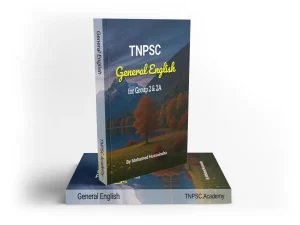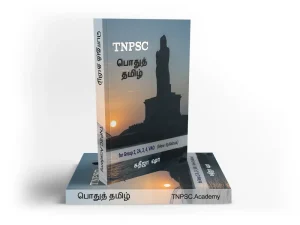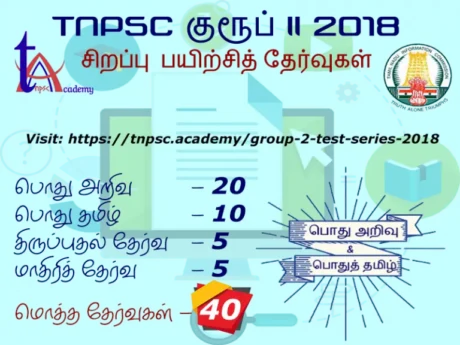TNPSC Books
-
 TNPSC General English Book - for Group 2 & 2A
TNPSC General English Book - for Group 2 & 2A
₹1,000.00Original price was: ₹1,000.00.₹850.00Current price is: ₹850.00. -
 TNPSC பொதுத் தமிழ் Book - for Group 2, 2A, 3, 4 & VAO
TNPSC பொதுத் தமிழ் Book - for Group 2, 2A, 3, 4 & VAO
₹1,000.00Original price was: ₹1,000.00.₹850.00Current price is: ₹850.00.
Group 1 Courses
TNPSC Group 1 - Test Series - 2019
4.7₹3,500.00Original price was: ₹3,500.00.₹2,800.00Current price is: ₹2,800.00. 541Group 1 | Postal and Online Test Series | 2022
₹3,200.00Original price was: ₹3,200.00.₹2,800.00Current price is: ₹2,800.00. 88
Group 2 & 2A Courses
TNPSC Group 2 and 2A - Test Series - 2019 - தமிழ்
₹2,400.00Original price was: ₹2,400.00.₹1,800.00Current price is: ₹1,800.00. 175TNPSC Group 2 and 2A - Test Series - 2019
₹2,400.00Original price was: ₹2,400.00.₹1,800.00Current price is: ₹1,800.00. 527












www.tnpsc.academy – TNPSC Current Affairs November 16, 2020 (16/11/2020)
Topic: India and its Neighborhood Countries
China’s Railway Near Arunachal Border
China has begun work on a strategically significant railway line that will link Sichuan province with Nyingchi in Tibet, which lies close to Arunachal Pradesh border.
Key facts:
This will be the second such route linking Tibet Autonomous Region (TAR) with mainland China. Earlier Qinghai-Tibet railway line connected Lhasa to the hinterland.
Implications on India:
Security Concerns:
The railway line will largely improve the efficiency and convenience of military personnel and material transportation and logistical supplies in the border area.
In situations of direct standoff near Arunachal Pradesh border, as was seen during Doklam or recent Ladakh standoff, China might be at an advantageous position.
Doklam Issue: Indian troops intervened to block the path of Chinese soldiers engaged in building road-works on the Doklam plateau of Bhutan’s territory that Beijing laid claim.
_
Topic: Historical diary of Events
Birth Anniversary of Birsa Munda
The Prime Minister paid tributes to tribal leader Birsa Munda on his birth anniversary on 15th November. The State of Jharkhand, carved out of Bihar, officially came into being on Munda’s birth anniversary in 2000.
Key facts:
Birth: 15th November 1875, belonged to the Munda tribe in the Chotanagpur Plateau area.
Also known as Dharti Aaba (Father of Earth), Birsa Munda is known to have mobilised the tribal community against the British and had also forced the colonial officials to introduce laws protecting the land rights of the tribals.
Birsait Sect:
Having gained awareness of the British colonial ruler and the efforts of the missionaries to convert tribals to Christianity, Birsa started the faith of ‘Birsait’. Members of the Munda and Oraon community joined the Birsait sect and it turned into a challenge to British conversion activities. Further, he urged the Mundas to give up drinking liquor, clean their village, and stop believing in witchcraft and sorcery.
Munda Rebellion:
It is one of the most important tribal movements. It was led by Birsa Munda in the south of Ranchi in 1899-1900. The movement identified following forces as the cause of the misery the Mundas were suffering:
The land policies of the British were destroying their traditional land system. Hindu landlords and moneylenders were taking over their land. Missionaries were criticising their traditional culture.
The ‘Ulgulan’ or the ‘Great Tumult’ as the movement came to be called, aimed at establishing Munda Raj by driving out the British.
Munda used traditional symbols and language to rouse people, urging them to destroy “Ravana” (dikus/outsiders and the Europeans) and establish a kingdom under his leadership.
Birsa’s followers began targeting the symbols of diku and European power. They attacked police stations and churches, and raided the property of moneylenders and zamindars. They raised the white flag as a symbol of Birsa Raj.
On 3rd March, 1900, Birsa Munda was arrested by the British police while he was sleeping with his tribal guerilla army at Jamkopai forest in Chakradharpur (Jharkhand).
Birsa died of cholera in the jail and the movement faded out.
Significance of Munda Rebellion:
It forced the colonial government to introduce laws so that the land of the tribals could not be easily taken over by dikus (Chotanagpur Tenancy Act, 1908).
It showed that the tribal people had the capacity to protest against injustice and express their anger against colonial rule.
Jharkhand Foundation Day:
The name “Jharkhand” means “The Land of Forests”. The state was brought into existence by the Bihar reorganization Act on 15th November, 2000 – the birth anniversary of the legendary Bhagwan Birsa Munda.
Jharkhand shares its border with the states of Bihar to the north, Uttar Pradesh and Chhattisgarh to the west, Odisha to the south, and West Bengal to the east.
Most of the state lies on the Chotanagpur Plateau, which is the source of the Koel, Damodar, Brahmani, Kharkai, and Subarnarekha rivers, whose upper watersheds lie within Jharkhand.
Forest preserves support populations of tigers and Asian Elephants (Betla National Park).
Jharkhand boasts of 40% and 29% of India’s mineral and coal reserves, respectively.
Jharkhand has 32 tribal groups including Munda, Kol, Santhal, Oraon, Khond, Asur, Gond etc.
_
Topic: Profile of States
New Ramsar Sites
Recently, the Meteor lake at Lonar in Buldhana district of Maharashtra and the Soor Sarovar at Agra have been declared Ramsar sites, a conservation status conferred by International Ramsar Convention on Wetlands.
Earlier this year Kabartal Wetland (Bihar) and Asan Conservation Reserve (Uttrakhand) were also designated as Ramsar sites. With latest inclusions, the total number of Ramsar sites in India is 41, the highest in South Asia.
Key facts:
The Lonar lake, situated in the Deccan Plateau’s volcanic basalt rock, was created by the impact of a meteor 35,000 to 50,000 years ago. The lake is part of Lonar Wildlife Sanctuary which falls under the unified control of the Melghat Tiger Reserve (MTR).
It is also known as Lonar crater and is a notified National Geo-heritage Monument. Geo-heritage refers to the geological features which are inherently or culturally significant offering insight to earth’s evolution or history to earth science or that can be utilized for education.
It is the second Ramsar site in Maharashtra after Nandur Madhmeshwar Bird Sanctuary in Nashik district.
The water in the lake is highly saline and alkaline, containing special microorganisms like anaerobes, Cyanobacteria and phytoplankton.
_
Topic: Geographical Landmarks
Leonid Meteor Showers to reach their peak in India
The Leonid Meteor Showers are to reach their peak in India between November 17, 2020 and November 18, 2020. For the year 2020, these showers are active between November 6 and November 30.
What are Leonid Showers?
The Leonids emerge from the comet Tempel-Tuttle. The comet takes 33 years to complete one revolution around the sun. The Leonid meteor showers are bright and are travelling at the speed of 71 km per second. During this year, around 10 to 15 meteors are expected to be seen every hour. The Leonid showers include large meteors than the average meteors.
The meteor showers are usually named after the constellation they come from. Leonids originate from the constellation Leo.
What is a meteor shower?
As the Earth revolves around the sun, it passes through large cosmic debris. These debris are remnants of comets. Comets are frigid chunks of matter. It leaves dirty trails of ice and rock that linger after the comets have passed. When the earth passes through these remnants, they are acted upon earth’s gravity and some begin to fall down towards the earth’s surface. While falling down, they catch fire due to the friction of the earth’s atmosphere. This fireball of the remnants are meteor showers.
There are several meteor showers occurring throughout the year. According to NASA, over 30 meteor showers occur annually. The Perseid Meteor shower occurs in August every year.
Currently Active Meteor Showers:
According to the International Meteor Organization, the meteor showers that are currently active are Northern Taurids, Sothern Taurids and Leonids. The Geminids and Ursids meteor showers will occur in December.
_
Topic: Profile of States
India’s longest single-lane motorable suspension bridge
India’s longest single-lane motorable suspension bridge has been inaugurated in Tehri-Garhwal district of Uttarakhand.
The bridge is 725-metre long and has been built over the Tehri lake. It is also known as the Dobra-Chanti suspension bridge.